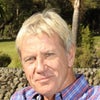How Southwest Airlines Created a Mass Market for Air Travel Herb Kelleher created the first budget airline, which found great success by simplifying everything from the destinations to the (lack of) snacks served on board.
By Richard Koch
Opinions expressed by Entrepreneur contributors are their own.

The following excerpt is from Richard Koch and Greg Lockwood's book Simplify. Buy it now from Amazon | Barnes & Noble | iTunes
Can you remember when full-service airlines, with two or three classes of passengers, were the only choice -- for both intercontinental and domestic travel? It wasn't a bad system, but it was complex, expensive and exclusive. Only the rich traveled by air. Then one man changed the system forever. Let's talk about how he did it, and start to explore how to create a mass market for any product that excludes most people because it's too expensive. Part of that process involves product redesign.
Related: 3 Business Strategies To Grow Your Startup
There's a recurring pattern with markets and firms. Companies provide better products and more of them. Striving to increase product performance multiplies both product and organizational complexity, making it harder for many customers to afford or use the product or service easily. When firms become more complex, they distance themselves from their customers, executives lose sight of what they should be doing and products become even more elaborate and expensive. Then the music stops. One or two new entrants decide to simplify and slash prices. The new product or service they offer is often technically inferior but simpler and much cheaper (between 50 and 90 percent cheaper than its rivals). Demand explodes, and the industry changes forever.
Airlines are a perfect example of this phenomenon. Commercial airlines emerged after the First World War, with firms such as Imperial Airways, BOAC and BEA -- which later merged to become British Airways -- providing an elaborate "hub and spoke" route network that traversed the globe. Passengers could fly anywhere on a single ticket, with bags checked through to their final destination. They boarded a host of different aircraft depending on demand and location. There were several different classes of travel, all the way up to luxurious lounges that served copious meals on bone china and champagne in crystal glasses. The number of routes and standards of service rose continually, but the business system became ever more complicated and expensive to operate. This greater complexity necessitated higher fares, which were introduced, yet no airline was particularly profitable, and many suffered heavy losses for years. A mass market for air travel remained elusive.
Related: How Uber Used a Simplified Business Model to Disrupt the Taxi Industry
This pattern was rudely interrupted in 1971, when Herb Kelleher started the first budget airline -- Southwest -- which flew a short triangular route between the Texan cities of Dallas, Houston and San Antonio. Southwest Airlines now flies more passengers within the United States than any other airline.
So what was Kelleher's ticket to success?
He price-simplified by totally redesigning the product. After declaring "I can teach you the secret to running this airline in thirty seconds. This is it: We are the low-fare airline," he added, "Once you understand that fact, you can make any decision about this company's future as well as I can."
Kelleher was being modest. He simplified Southwest's product in several crucial ways, including:
- only point-to-point routes;
- one class of travel;
- no free refreshments or lounges;
- a fleet consisting solely of Boeing 737s, which simplified maintenance, scheduling and training;
- 10-minute turnaround at the gate;
- utilize smaller, secondary airports, which are cheaper and faster than the main hub airports; and
- sell direct to customers.
The system worked because low prices meant the planes were usually full and costs were pared to the bone. But behind Kelleher's product redesign lay something even more fundamental. He automated flying, just as Henry Ford automated car-making, Ingvar Kamprad automated the furniture industry with IKEA and the McDonald brothers automated hamburgers.
European budget airlines have further simplified Kelleher's template by co-opting customers to do some of the work, such as checking in online, carrying their own bags to the plane and ensuring they're ready to board promptly. This creates savings that is shared between the customers themselves and the airline.
But how do customers benefit from this efficiency savings? The obvious answer is in the price they pay: On a per-mile basis, a budget airline flight is typically less than half the price of a full-service economy (coach) equivalent and sometimes as little as a tenth. Moreover, because of fast turnaround times and the use of smaller airports, customers may also benefit from substantial time savings.
Related: How Airbnb Changed the Traditional Lodging Industry
What works for the customers also works for the budget carriers. For decades, the airline industry was notorious for losses and bankruptcies, and poor returns even for the survivors. Yet the largest budget airlines -- Southwest, EasyJet and Ryanair -- have all demonstrated dramatic growth in revenues, earnings per share and stock market value.
Much more important, however, is that airline simplifying has made it easier for a wide range of people to visit their friends and family. It has shrunk the globe, enhancing the experiences and increasing the sophistication of hundreds of million travelers. Finally, because flying is so much safer than driving, it may even be said that the budget airlines have saved thousands of lives.











